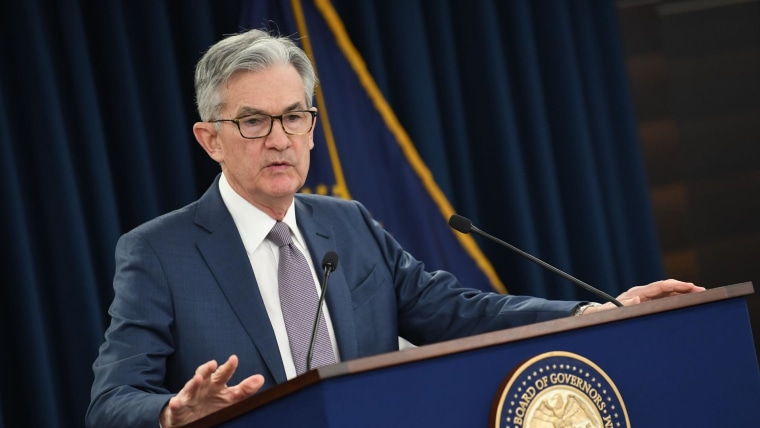March has been an eyebrow-raising time at the Federal Reserve. From a surprise half percent rate cut on March 3, to Sunday’s additional cut to 0 percent and $700 billion in Treasury and mortgage bond buying, and even plans to directly support short-term loans to non-bank companies, it’s been an unusual month.
The big dive markets took on Monday suggested that investors haven’t been impressed. But experts say these actions ultimately weren’t about making them happy. The Fed is looking to fill financial systems with enough money and credit that they don’t seize up like an automobile that runs out of oil, as the global economy did in 2008.
“The Fed is most focused right now in making sure financial markets keep operating,” said Luke Tilley, chief economist of Wilmington Trust. That means liquidity — money.
Financial systems are basically organized channels to move money where it needs to be, like blood through the human body. If the gets blocked, it means something similar to a heart attack or brain aneurism for a person. The financial equivalent is the financial crash of 2008, when liquidity and credit froze, and the entire financial system fell.
“One of the problems in 2008 was that lenders got worried about getting paid back,” Tilley said, noting that it was not necessarily that companies were in trouble, but that they wouldn’t be able to get timely access to cash even if they had things of value, such as government bonds.
“It got to the point that even what would otherwise be safe transactions, like [buying and selling] Treasurys, froze up,” Tilley said.
Let our news meet your inbox. The news and stories that matters, delivered weekday mornings.
Recent behavior of U.S. bonds, called Treasurys, has been a danger indicator. As stock prices have been dropping in record losses, investors pulled money out and bought bonds.
The more money that goes into bonds — which are initially sold by the Treasury with fixed interest rates and value and are then traded on secondary markets — the more their prices go up and their yields inversely go down.
Treasury yields have been hitting record lows and prices were hitting all-time highs, meaning the difference between what buyers were willing to spend and sellers demanding to receive was unusually large. Relatively few transactions were getting completed.
“Normally big broker dealers would buy [the unwanted Treasurys],” said William English, a professor in the practice of finance at Yale School of Management. But brokers are required to keep certain levels of capital available and “could have been worried about their own funding,” he said.
Because Treasurys are stores of money for many around the world, an inability to sell is the equivalent to having your bank account frozen. The implications can cascade, freezing the entire global financial system.
“One hypothesis is the American consumer is the economic engine that has powered our country,” said Christopher Campbell, chief strategist at consultancy firm Duff & Phelps and a former Treasury official under multiple administrations. “When we as Americans stop going to businesses and doing things, there’s going to be a lot less money.” Companies need more liquidity to budget through this crisis.
It isn’t the first time that markets have worried about liquidity. In the fall of 2019, overnight lending among banks and other big financial institutions saw interest rates spike — a different sign that there wasn’t enough liquidity in the system. The Fed stepped in by providing money to banks, ensuring adequate liquidity.
The most current Fed action, announced on Tuesday, involves the creation of its own group to provide commercial paper funding backed by $10 billion in credit protection.
Commercial paper refers to unsecured short-term financial instruments — essentially a loan from non-bank investors — that large corporations commonly use. During the financial crisis, investors stopped trusting commercial paper. Companies could no longer get that form of financing, which caused them to cancel or scale back plans and operations, helping to drive down the entire economy.
“Commercial paper is vital to companies who are avoiding a cash crunch,” said Greg McBride, chief financial analyst at Bankrate.com. “It may be how they purchase supplies or how they assemble their product. It may be how they meet payroll. Having access to a low cost source of funds is almost like oxygen. They really need that pipeline for survival.”
Part of the Federal Reserve’s job is to be the “lender of last resort,” McBride said, noting that the central bank’s action today “removes the fear that institutions won’t be able to pay back the loan.”
“The Fed is bringing everything to bear,” said John McColley, a portfolio manager at Columbia Threadneedle Investments. “They talked for months that it never pays to take small steps.”
What the agency is doing is more like giant steps, which might suggest how worried experts really are.
Leticia Miranda contributed.












